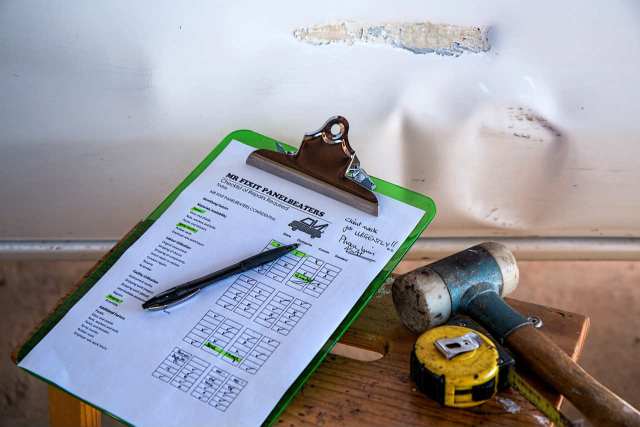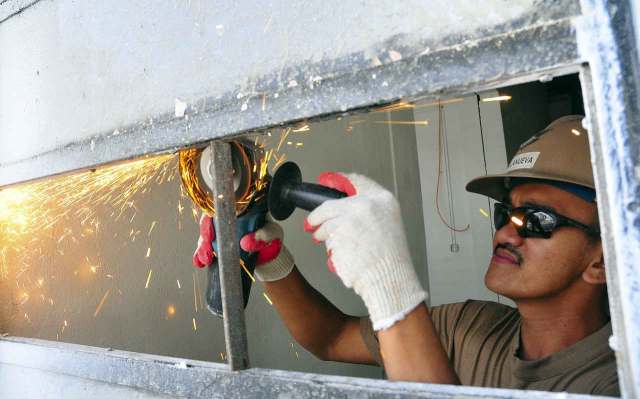A facility maintenance checklist, also called a preventative maintenance checklist, is an invaluable security tool to keep a building safe by periodical planning, checkups, and maintenance activities. It is the job of facility management teams to upkeep various aspects of building maintenance that get weathered by environmental conditions, worn out by frequent use or just expire because of technical capabilities of the materials included.
Irregular adhering to a facility maintenance checklist can cause mild issues in shorter periods and severe, even life-threatening security problems down the line. A mild issue can include failure of parts of the IT infrastructure that can prevent people from doing their daily work. A severe issue can be a power cut in a facility that doesn’t have a backup generator, which endangers substances or materials that must be kept under specific temperature conditions, in turn causing serious consequences to people’s health or life. Therefore, it’s critical for every facility to create a facility maintenance template, in which it will describe the necessary steps needed to be taken to keep everything safe and in order.

Since there are tasks that need to be completed on a more and on a less frequent basis, it is recommended for a building to create a daily facility maintenance checklist and a monthly facility maintenance checklist. Larger annual or ad hoc checkups are practiced when a key business asset needs to be replaced. Failure to create preventative maintenance checklists and not taking care of the risks on time can save you time and a smaller amount of money short-term, but create havoc in the long-term, provided a serious incident occurs.
The facility maintenance checklist can include the following aspects of a facility that require attention:
Construction works #
Exterior walls and masonry work wears out as time goes by and should be checked at least monthly, if not more often in detail, and daily for any visible cracks or demolished areas. Building arches, eaves and canopies should be inspected carefully as they tend to ruin more often. Routine roofing and soffit check-ups must be conducted along with the rest of the inspection of the building exterior.
Doors, gates, windows, and other openings #
Depending on the materials from which they are built from, doors and windows have various durability and should not be replaced often. But small parts, such as hinges, locks, and handles can break faster and thus prevent proper door functioning.

Lighting #
Although lighting has its own voice to tell when it doesn’t work, a facility manager mustn’t wait for defects to take action. Periodical check-ups of the lighting system must be part of the facility management checklist, and the power supply must be inspected on daily basis.
Plumbing #
Plumbing defects are not so easy to notice until they occur, but if you own a checklist template with equipment replacement guidelines, for instance, when to replace valve, you can avoid major issues. Irrigation system maintenance is sometimes done as part of plumbing activities, but it can also include additional checkups done by specialists.
Fire equipment #
Checking fire safety equipment is a law requirement, and if you don’t make it a part of the facility maintenance checklist, you can not only bring your facility to risk, but also face fines and penalties. Depending on where you are located, fire extinguishers must be serviced at least once a year, while door and crawl spaces should be inspected more often. If you have a sprinkler system installed, it should also undergo preventative maintenance together with the rest of the equipment.
Heating and Cooling #
The HVAC system requires cleaning and regular maintenance as, although it won’t automatically break your business, it is one of the most common complaints by staff, majorly affecting staff morale.
Access Control #
Specific elements of the access control system can be integrated with other aspects of facility, thus causing confusion about when and how each of them needs to be inspected. For instance, fire alarms can activate sprinklers while disabling some access doors. Video cameras can operate in several modes for monitoring, as well as for safety purposes. The WiFI network can be combined. Therefore, it’s good to have each of these aspects in a separate box on your daily and monthly facility inspection checklists in order to be able to do them without worrying you've missed an important aspect.

Sample Building Maintenance Checklist #
Below is a sample preventative maintenance checklist. Use the template for structuring and reminder purposes, adapting it to the facility’s specific situation.
Roofing - inspect twice a year and after adverse weather. #
- Check roofing files, contracts, and warranties.
- Clear debris from roof drains.
- Inspect the perimeter to check old and new damage to metal and copings.
- Check roof connections to the wall and roof flashing for tears and wrinkles.
- Check splits in the stripping plies, if the roof is made out of bitumen.
- For metal roofs, protect against corrosion.
- Weed, trim and irrigate a green roof.
- Conduct a moisture survey to find leaks.
- Inspect solar panels in the areas around penetrations.
- Install protection of the roof membrane.
HVAC - inspect at least twice a year. #
- Find screw issues, recharge P-traps or U-bend water traps.
- Hire a professional to inspect chillers and boilers.
- Inspect cooling towers for fill, fill valves, fan blades, motor bearings, gearbox and support structure, wiring and log observations.
- Check and lubricate pumps once a year.
- Clean and replace air filters once a month or twice a year, depending on the type
- Clean the condenser coil
- Check energy efficiency settings, including the compressor and the refrigerant
- Confirm that the superheat temperature is between 10 and 20 degrees Fahrenheit.
- Clean the economizer for corrosion and debris, and calibrate sensors.
Plumbing - requires full annual inspection. #
- Lubricate water booster and circulation pump systems
- Inspect couplings to find any leaks.
- Check water heaters and boilers.
- Check contacts for wear and run system tests.
- Check and replace refrigerant and oils where needed.
- Look at sump and sewage pumps at least once a year
- Check fixtures in public restrooms and look for any leaks.
.Lighting - requires frequent checks, some on a daily basis.
- Check lights with transformers, control gear, and other accessories
- Inspect cables, screws, gaskets, and hardware of exterior lights
- Create a relamping schedule
- Make sure to use lamps with the same color temperature.
- Clean lighting surfaces to increase performance.
- Check for mercury or lead lights and handle them with care.
Overall long-term checkups. #
- Doors and windows should be checked each year for weariness.
- Electrical system checkups must be done by licensed professionals each three to five years
- Garage lots must be inspected and cleaned biannually. Other outside surfaces should be repaired on 10 or 20-year intervals.
- Check and arrange the access control system maintenance requirements with your vendor.

